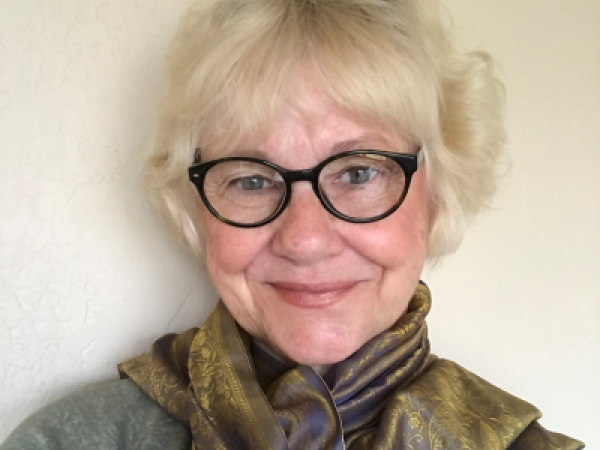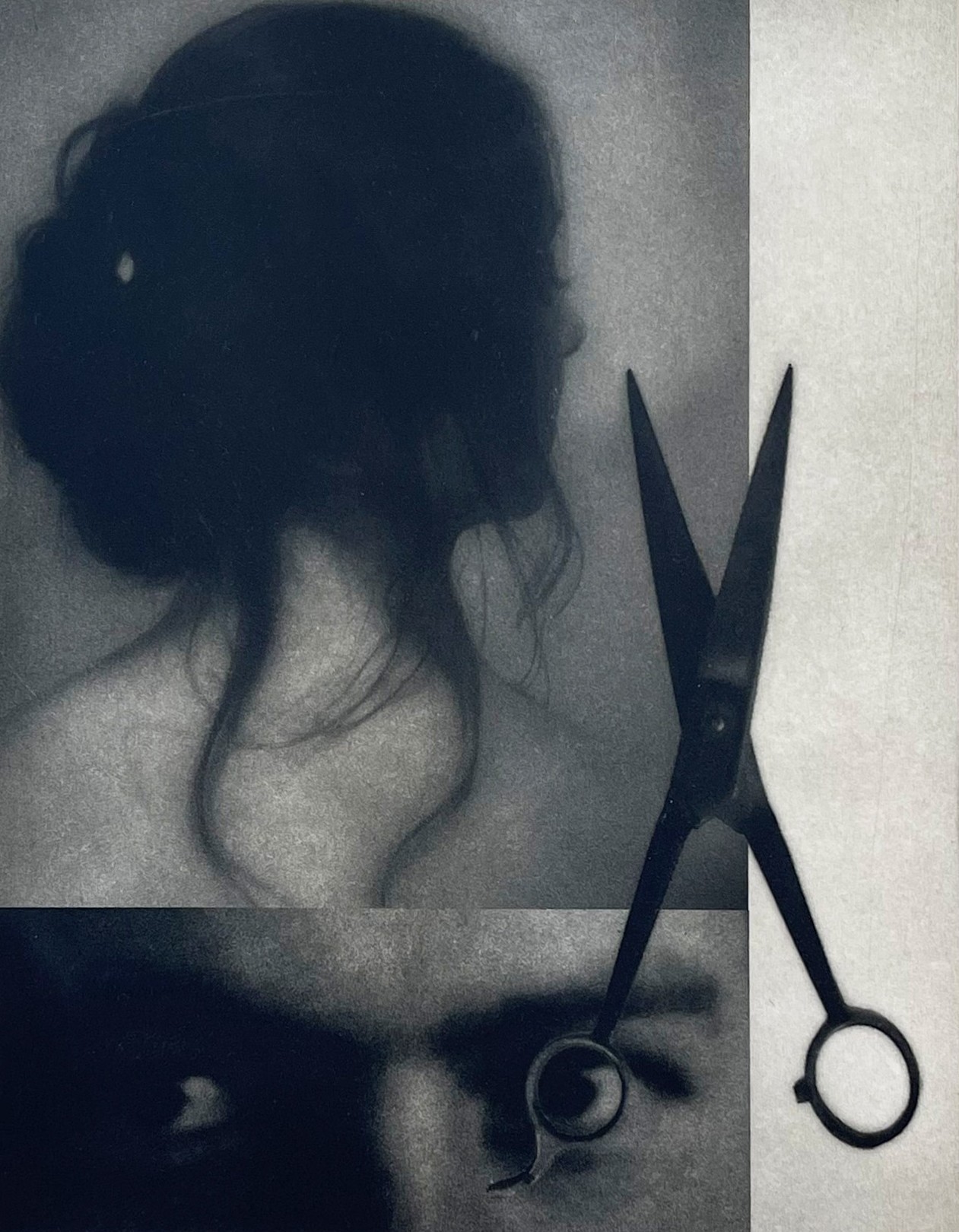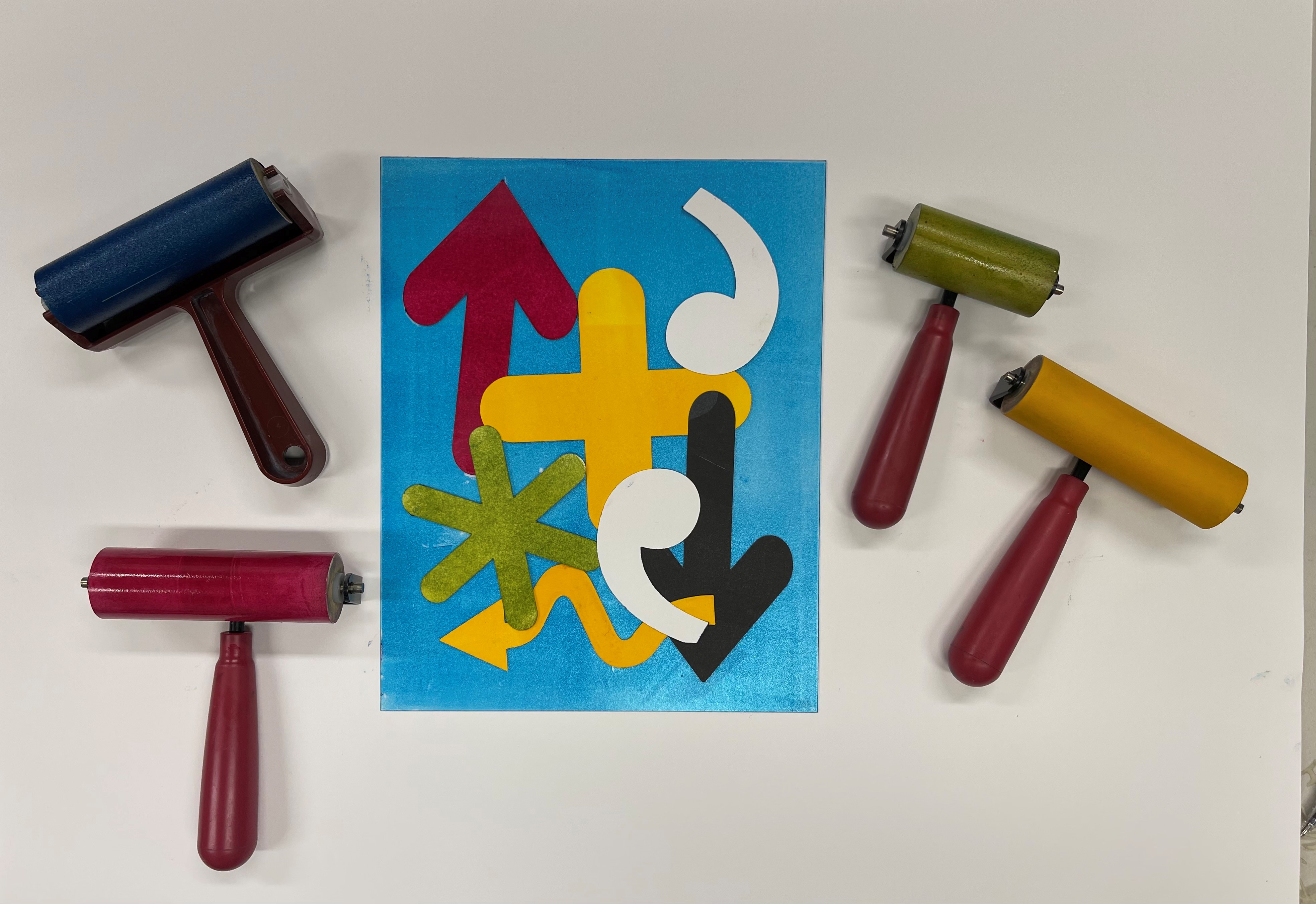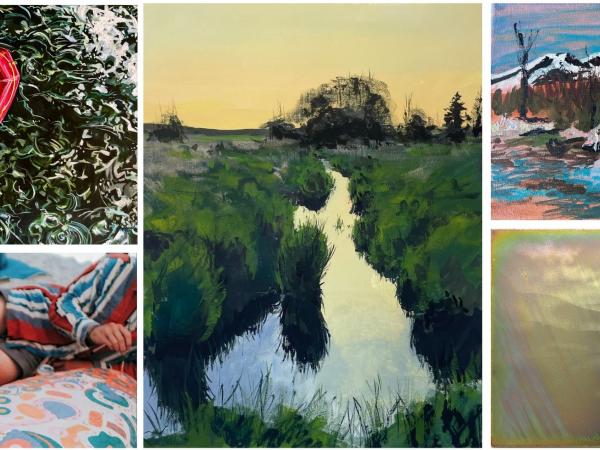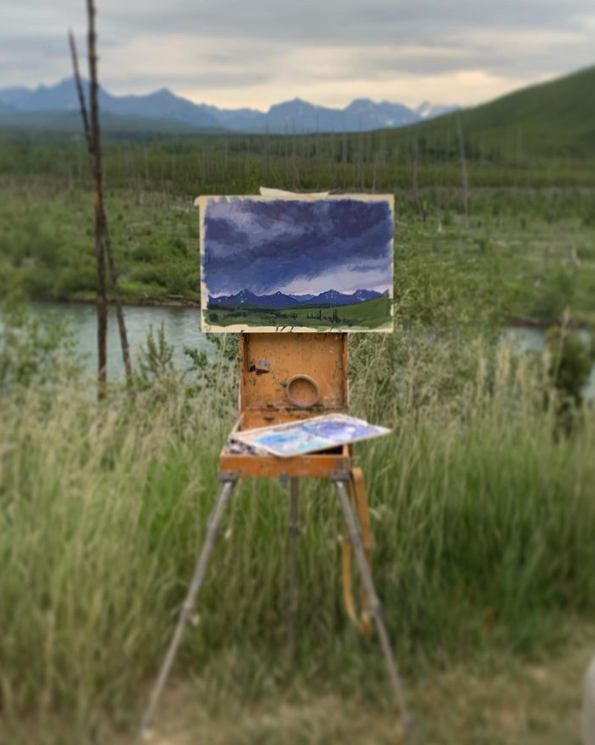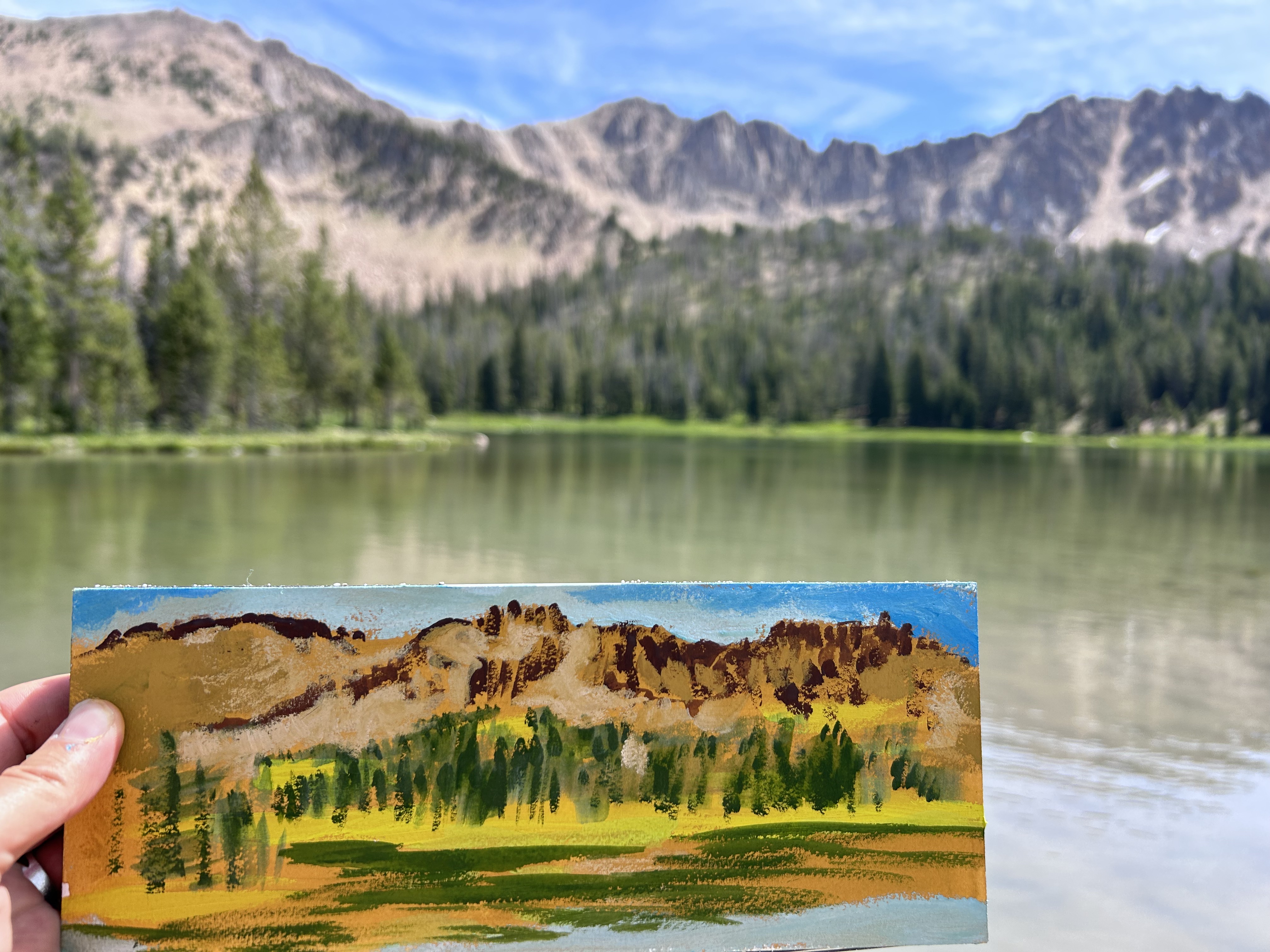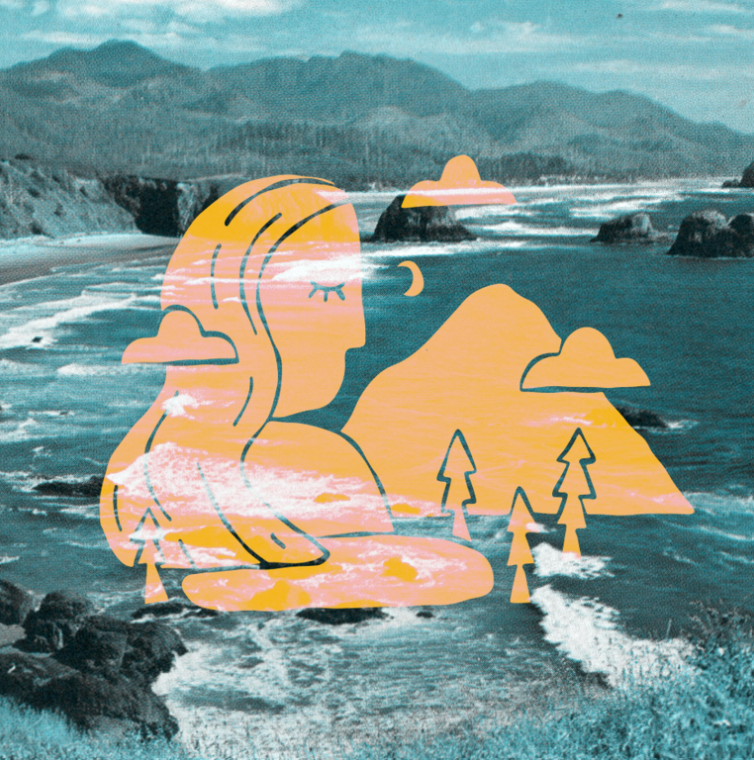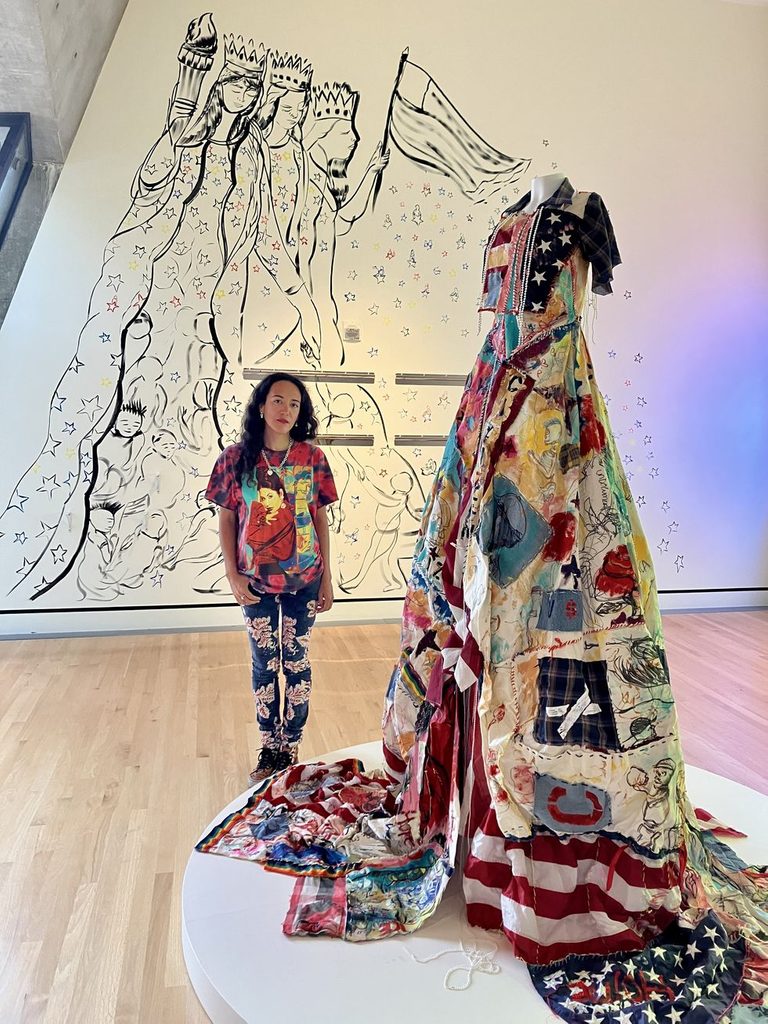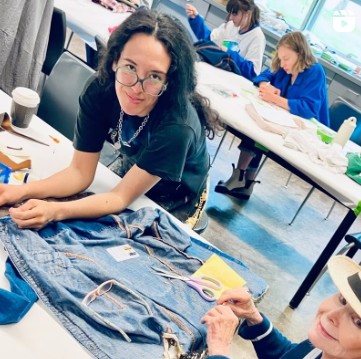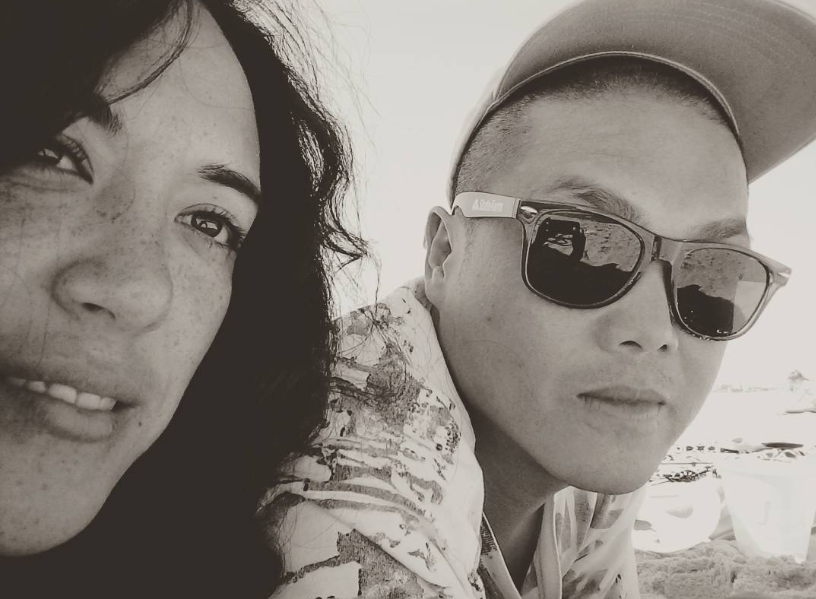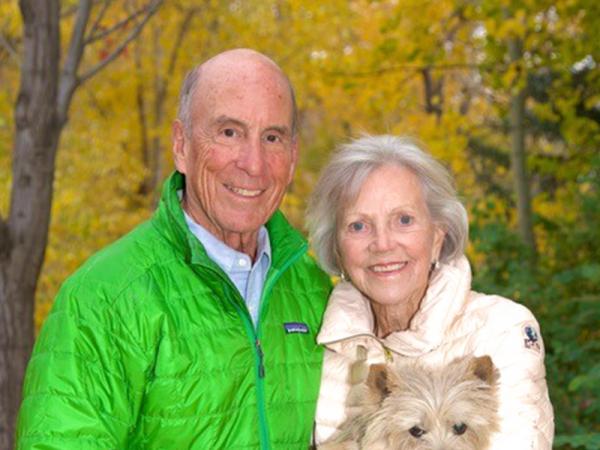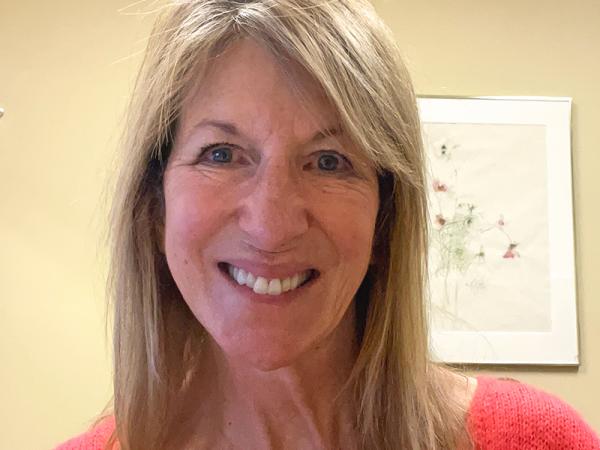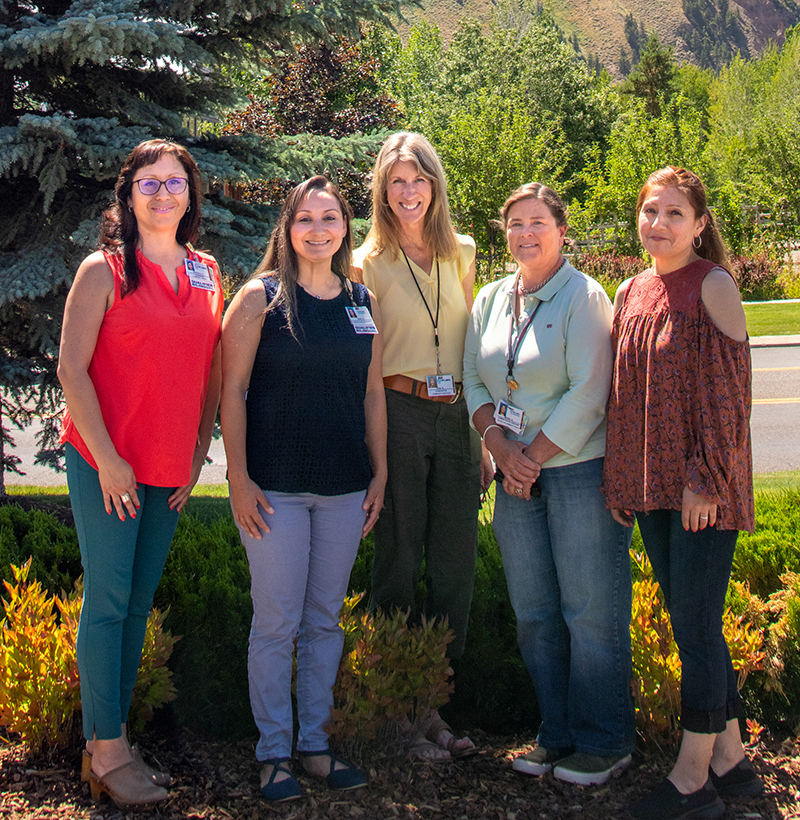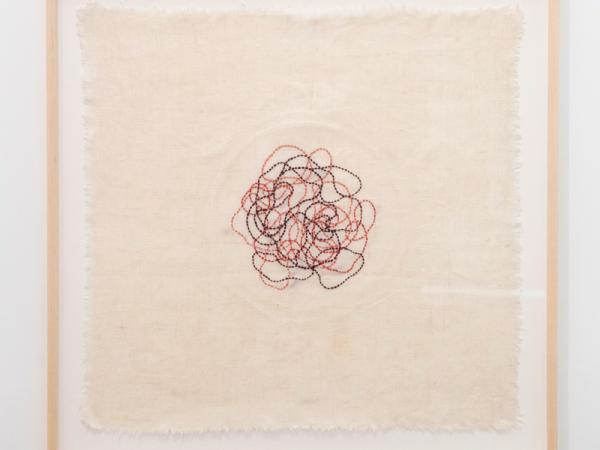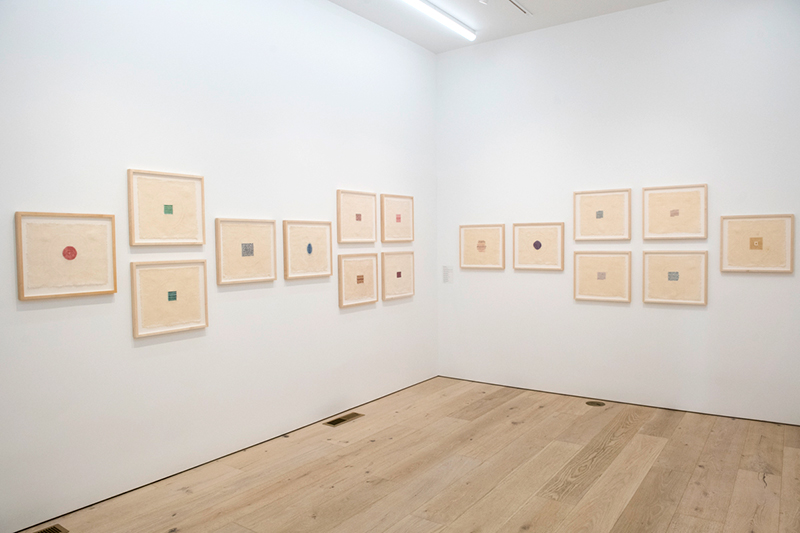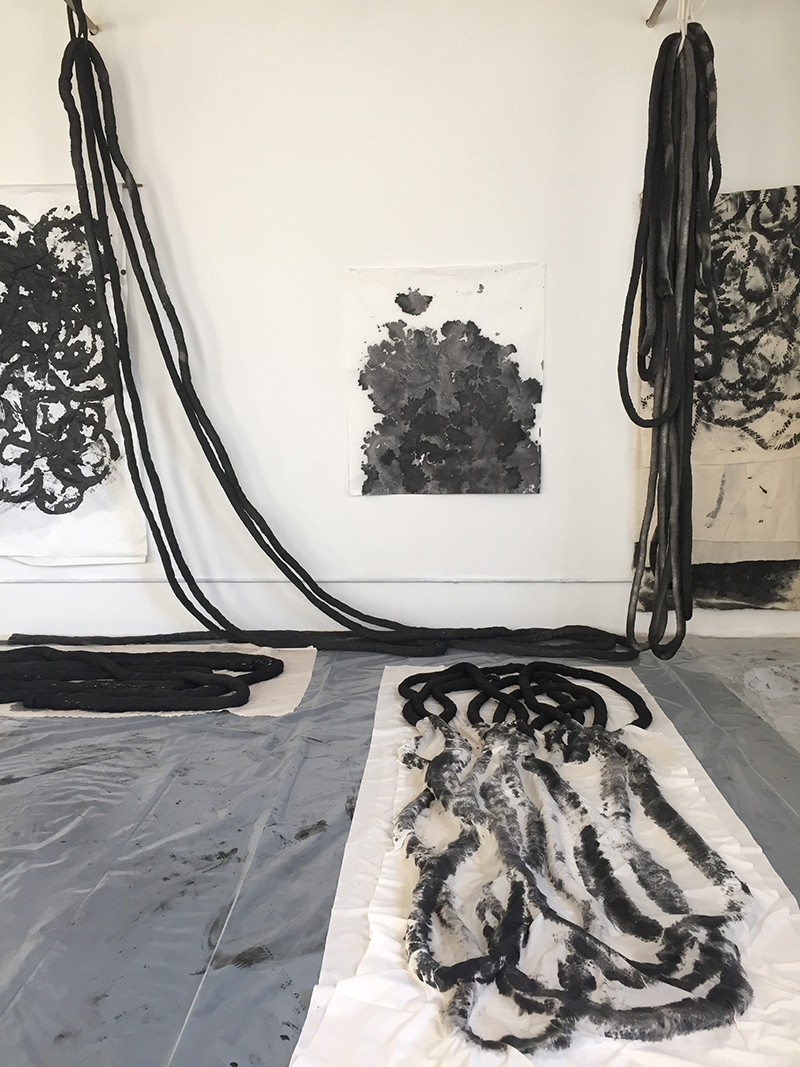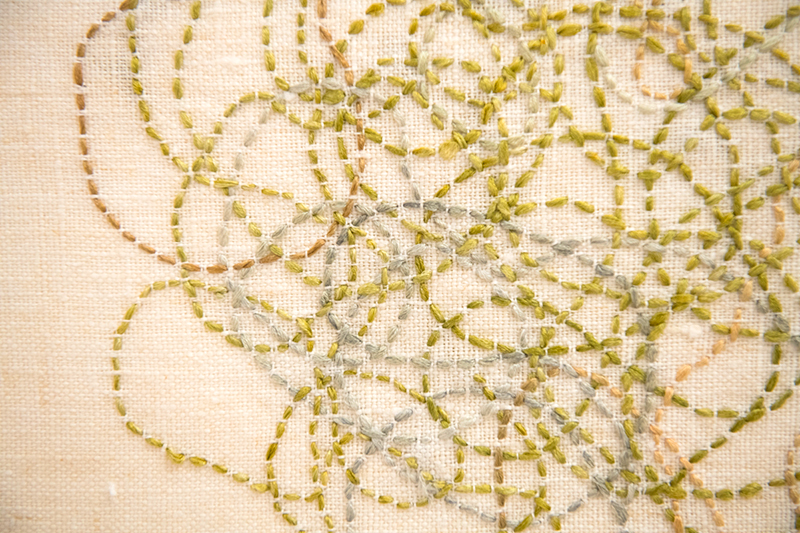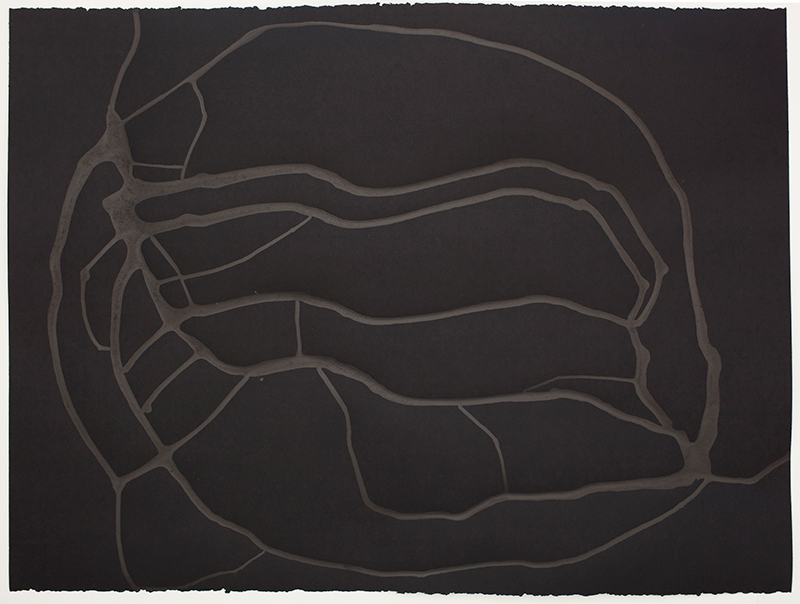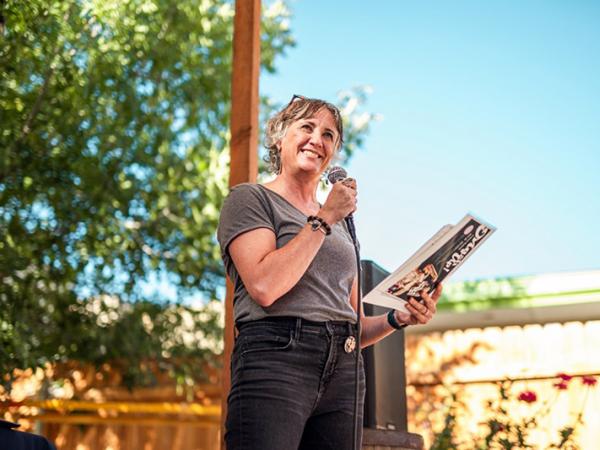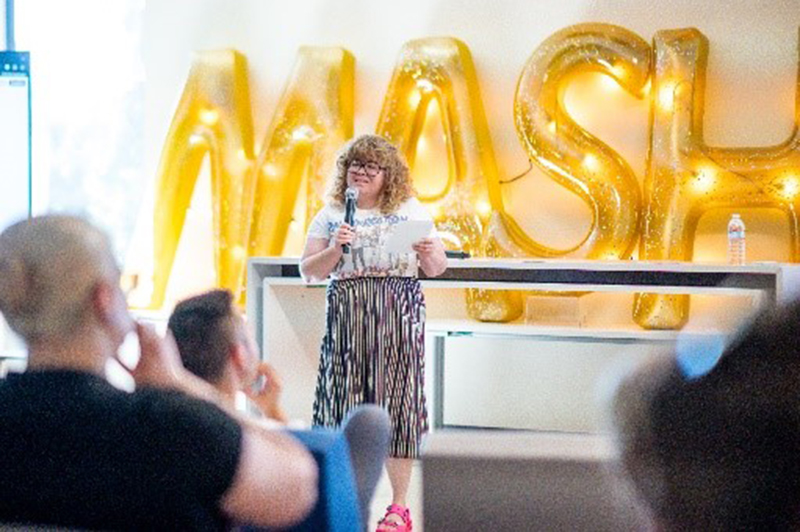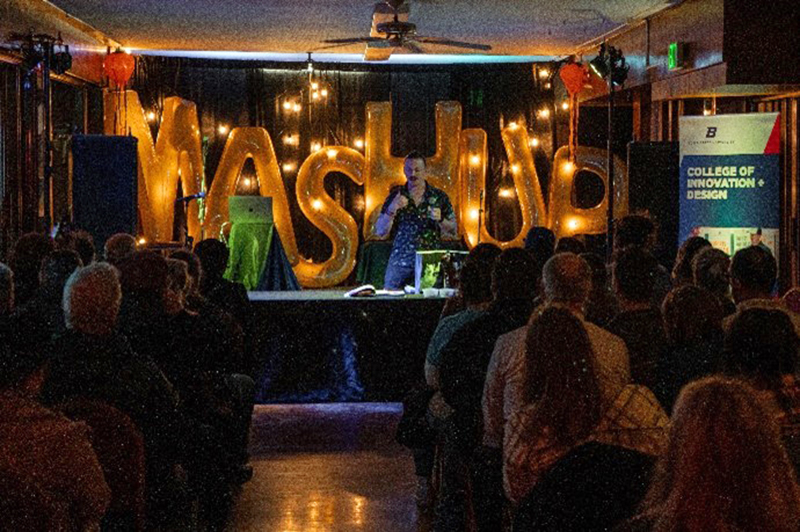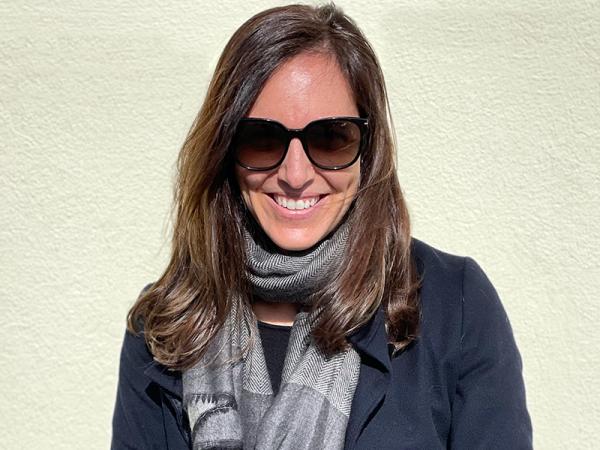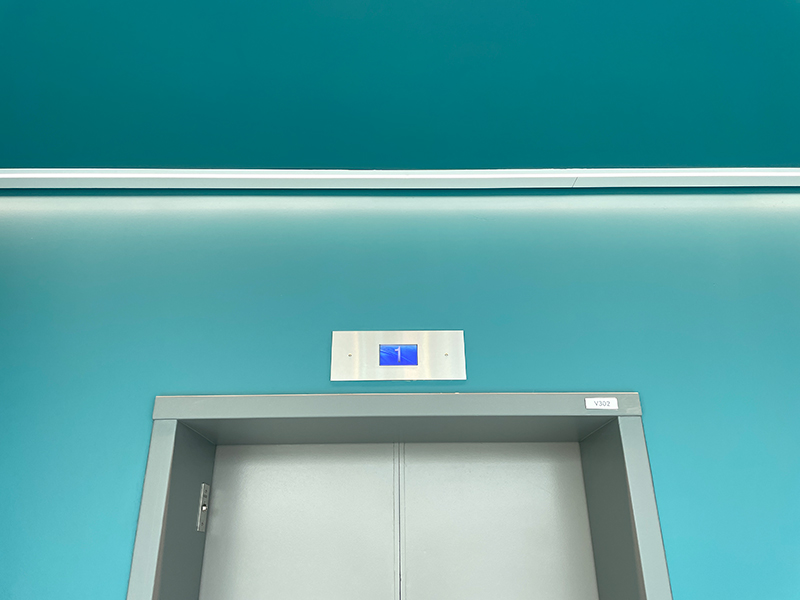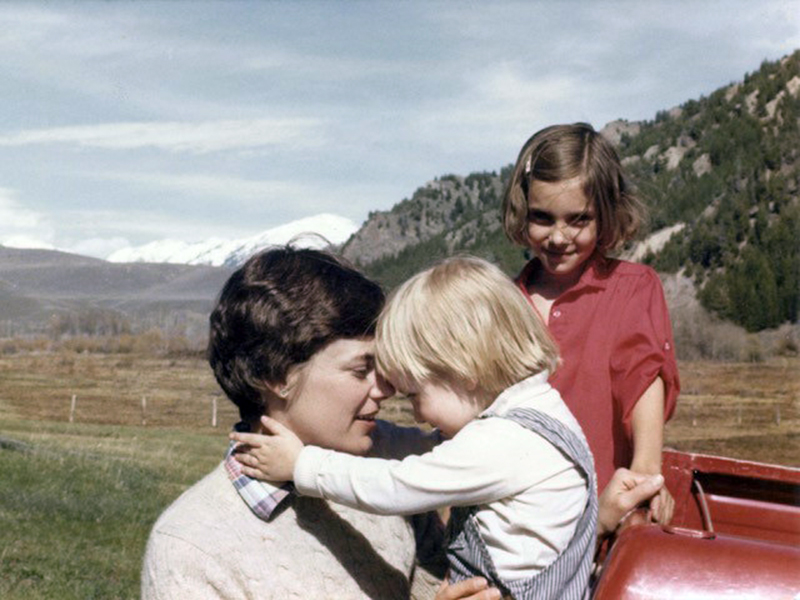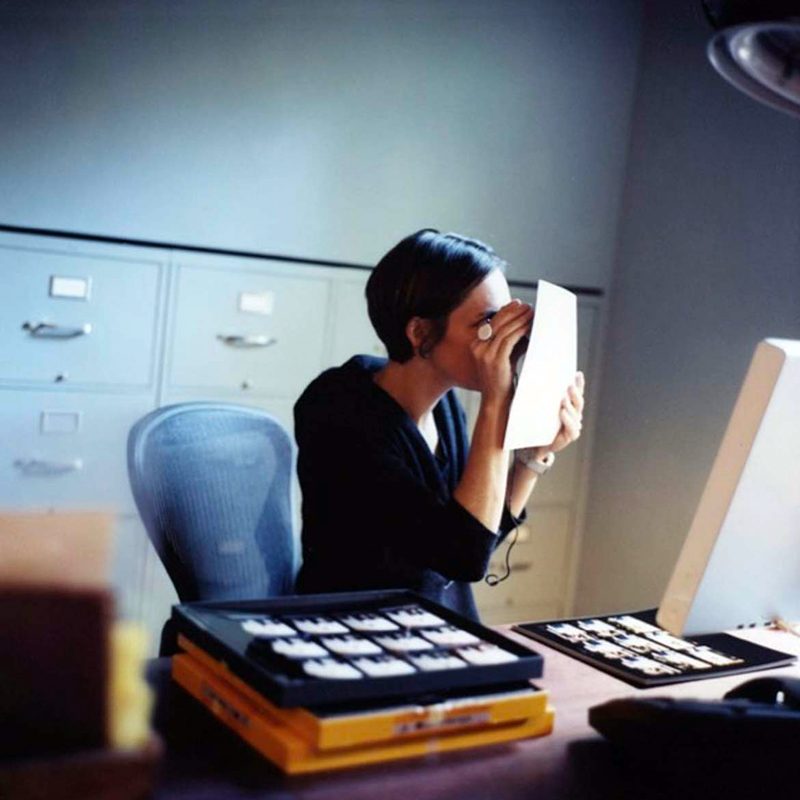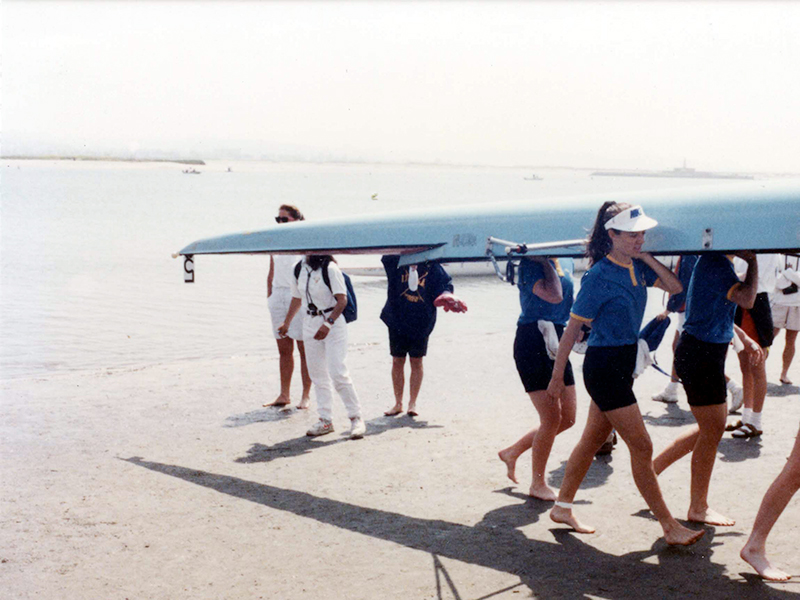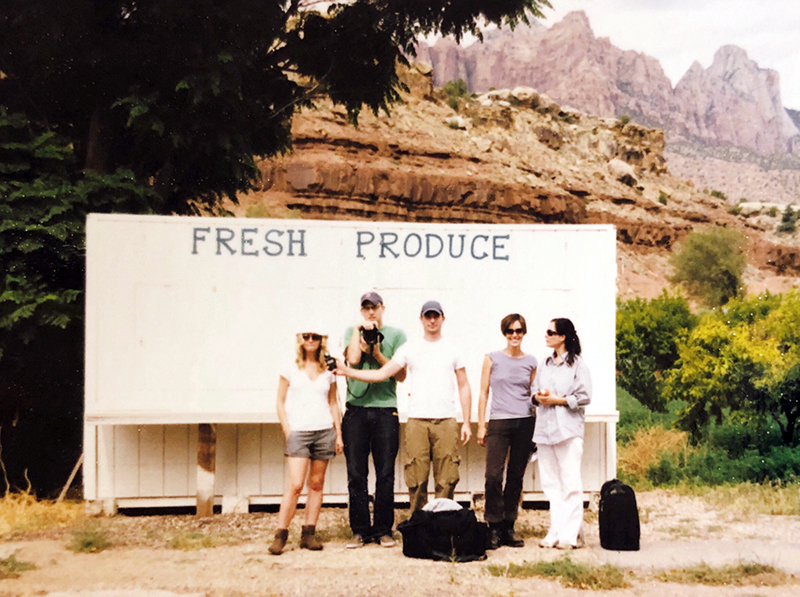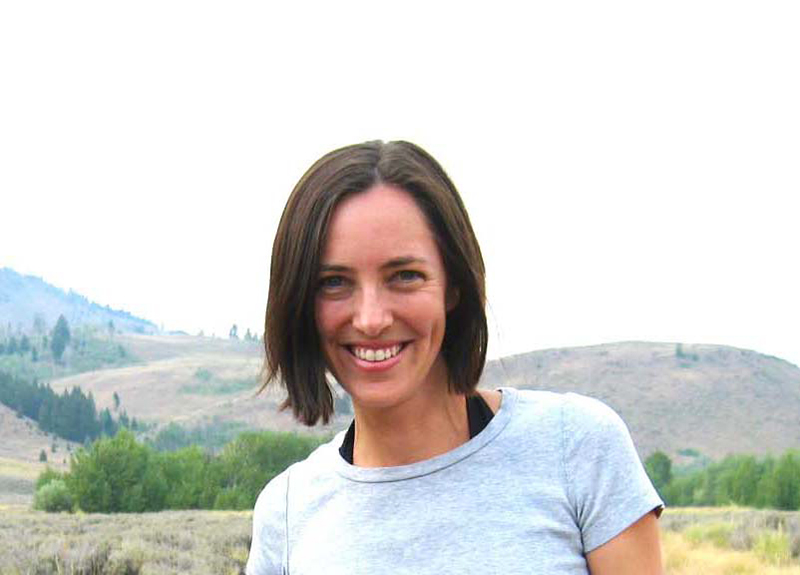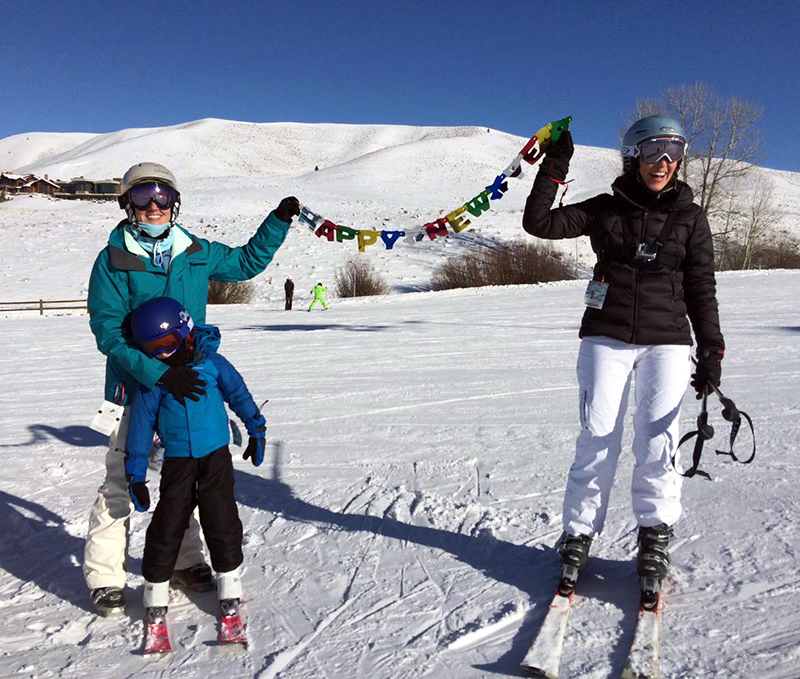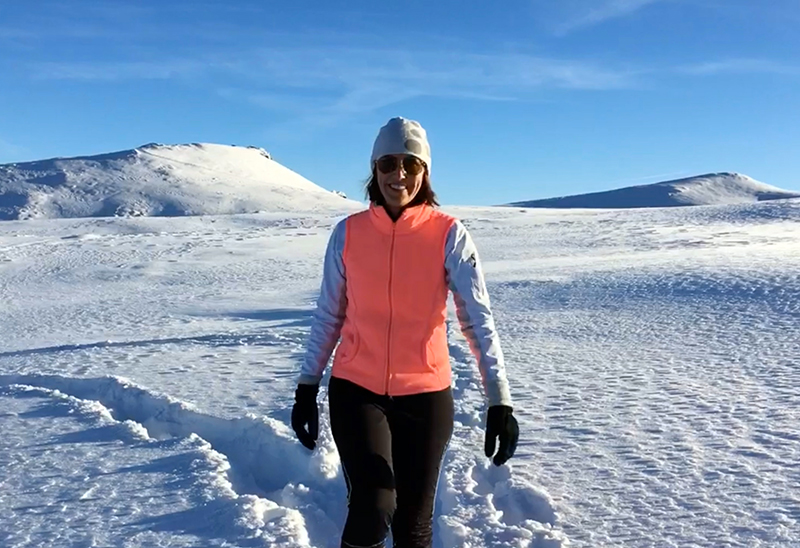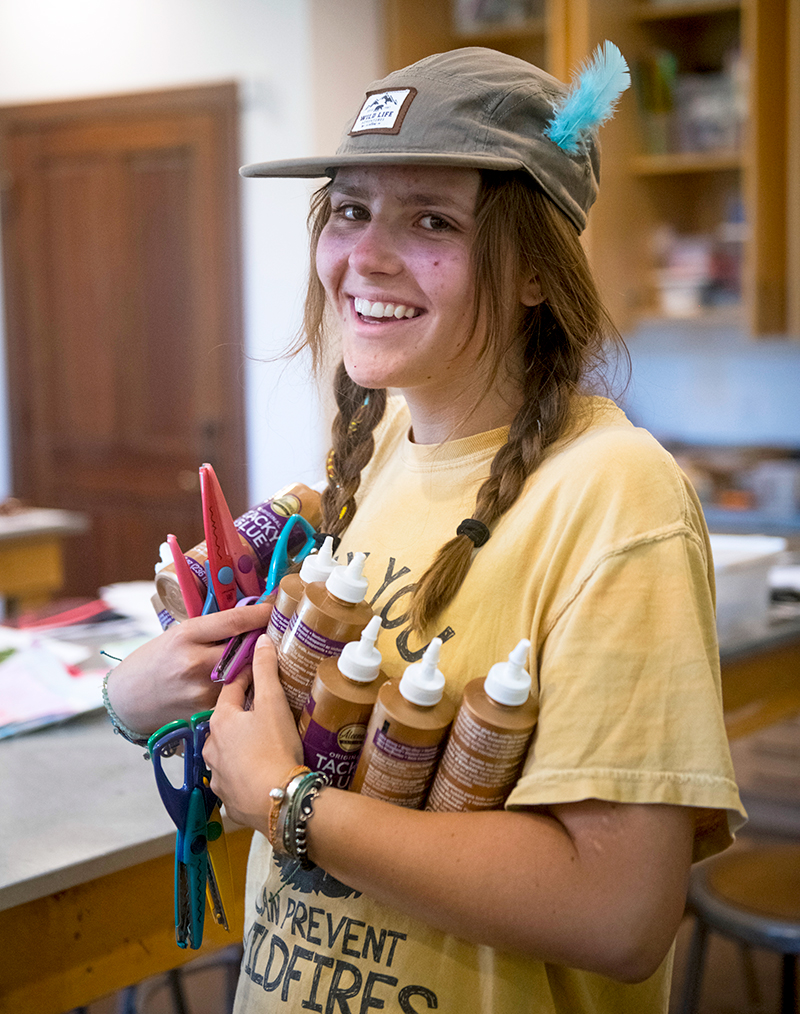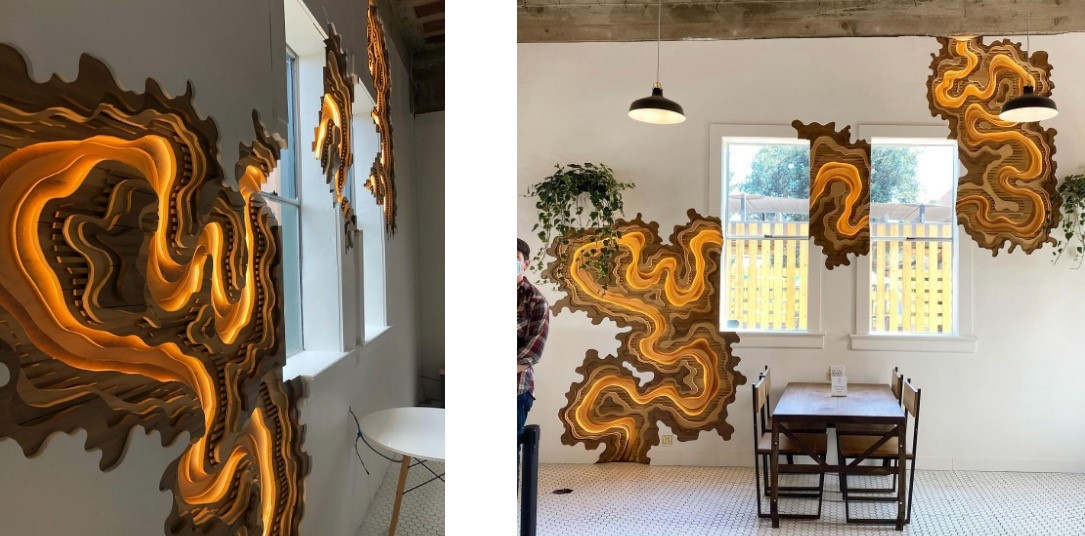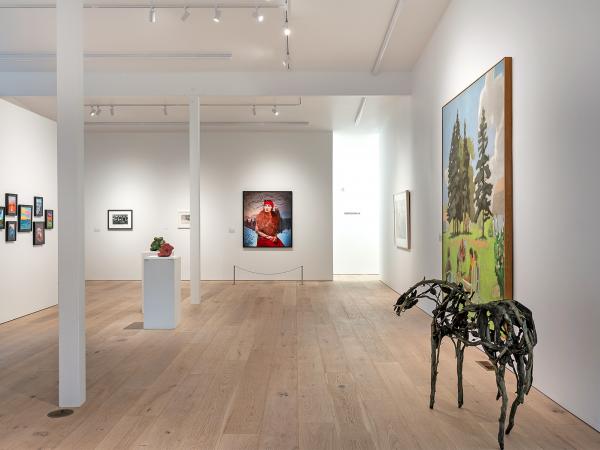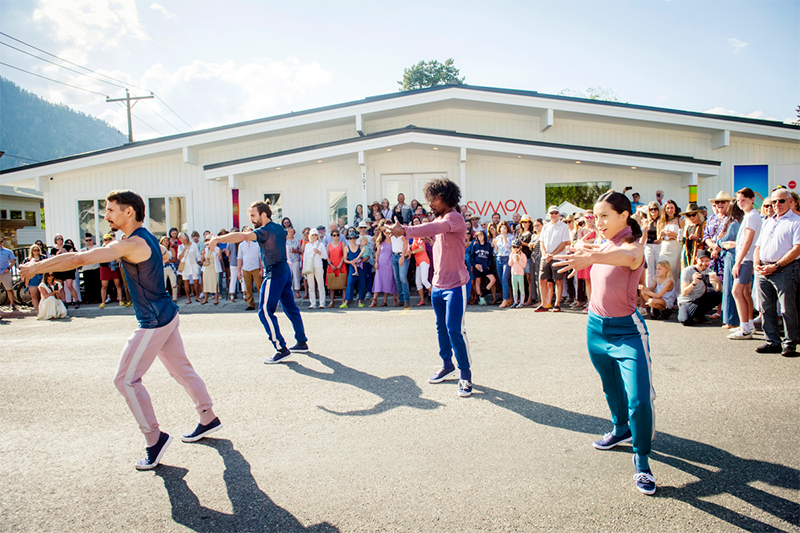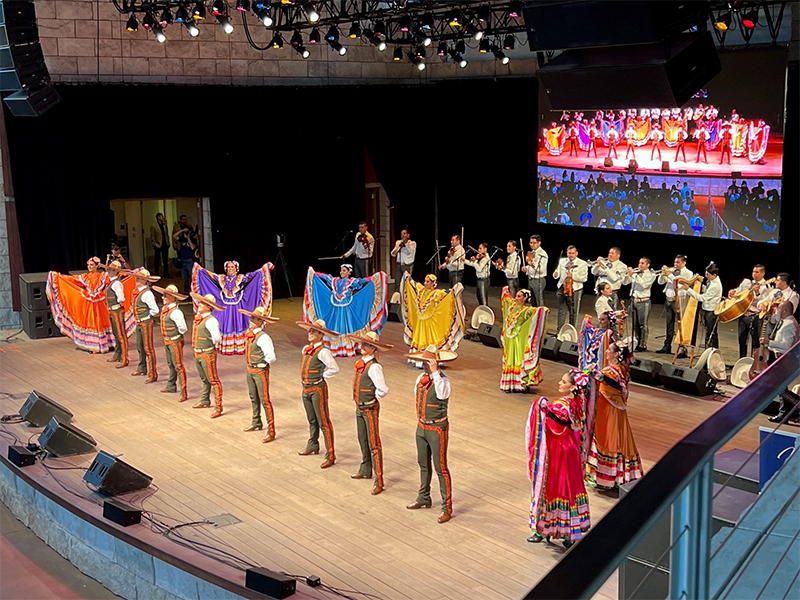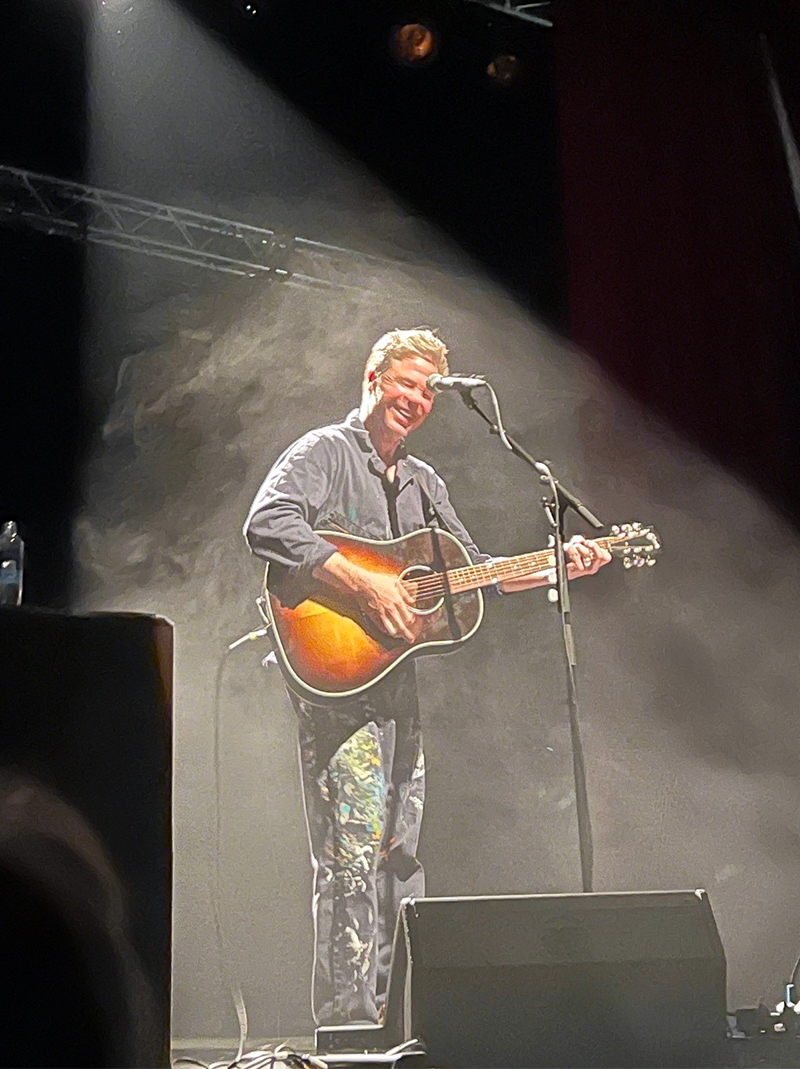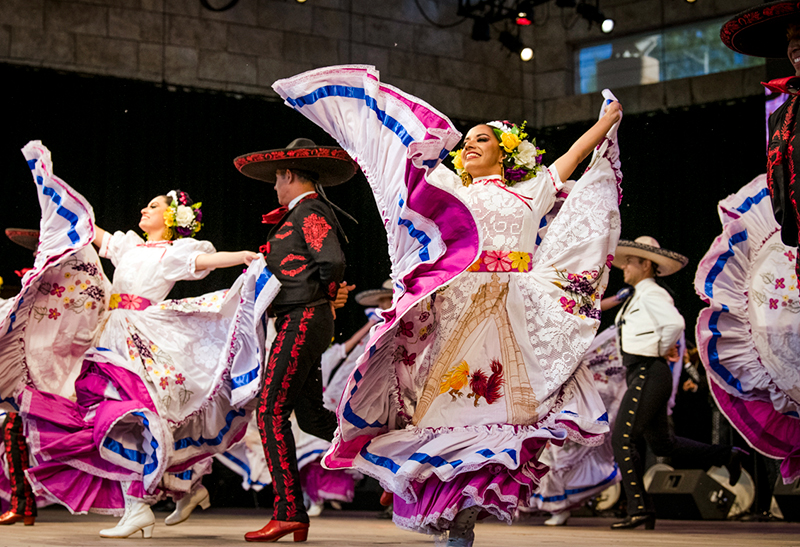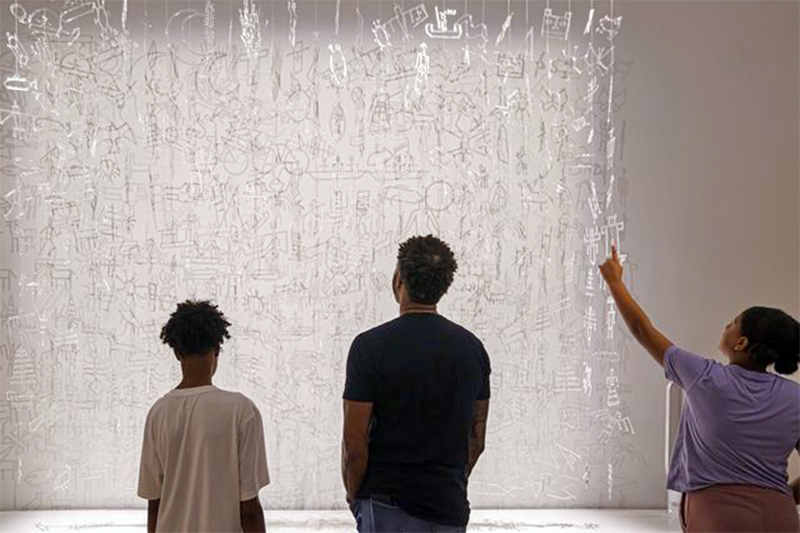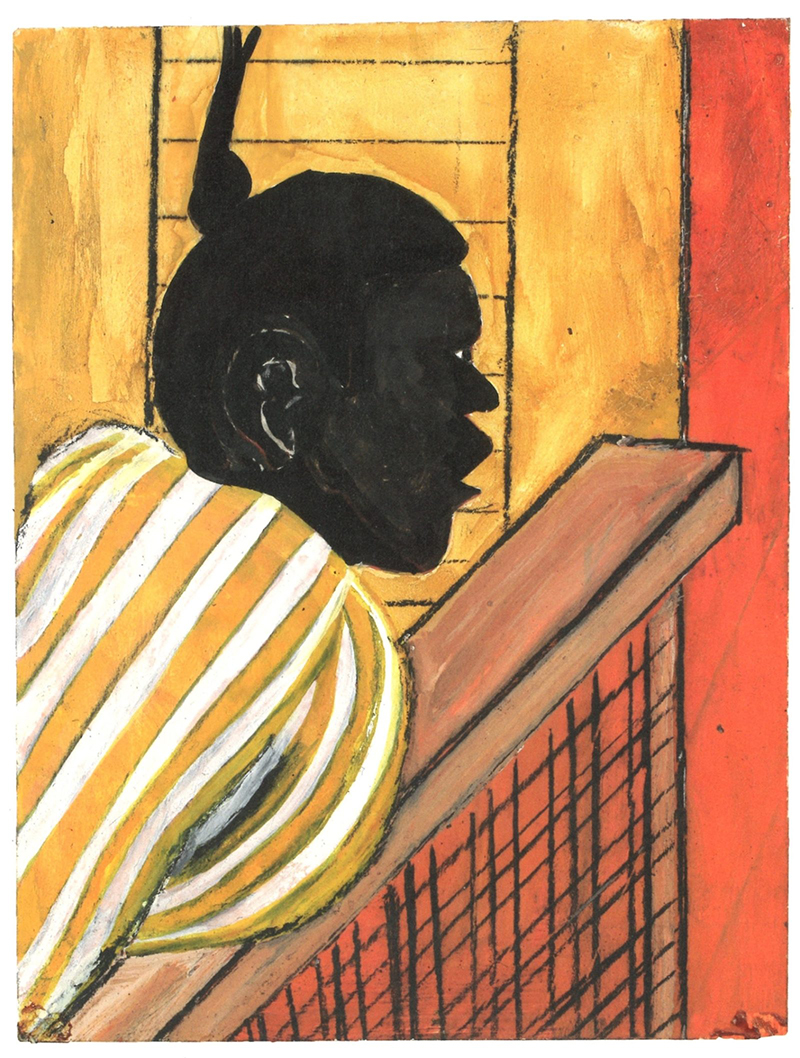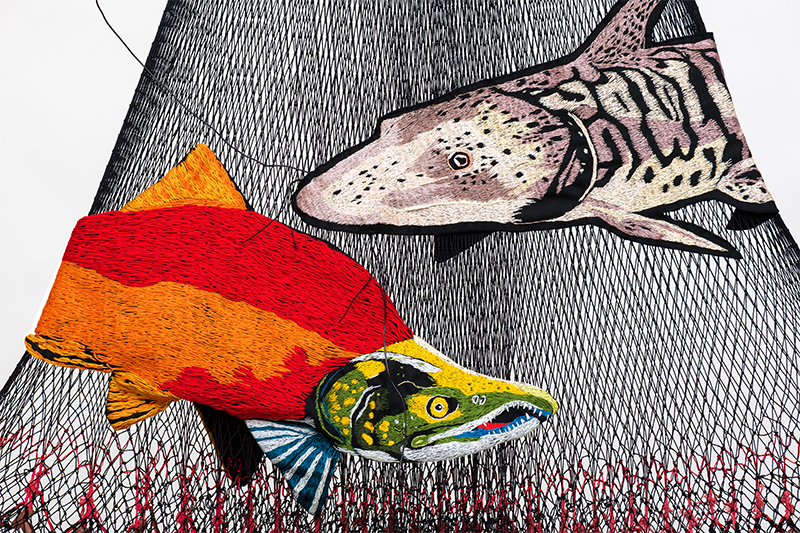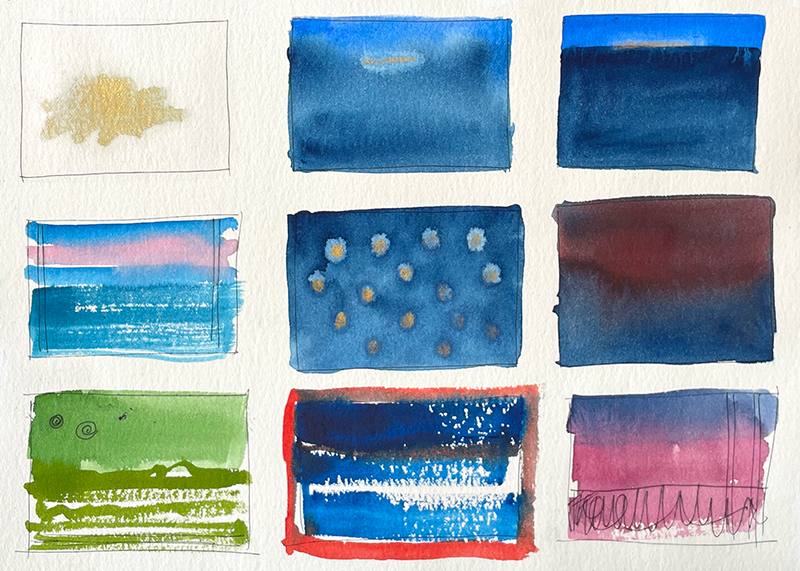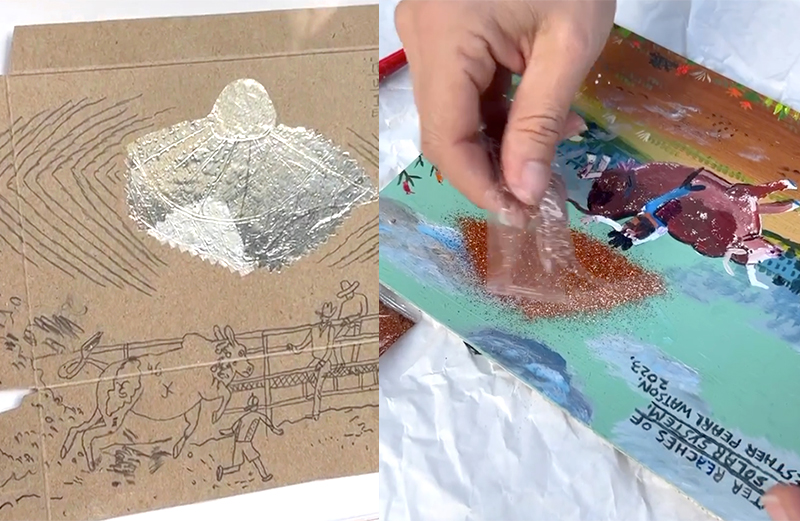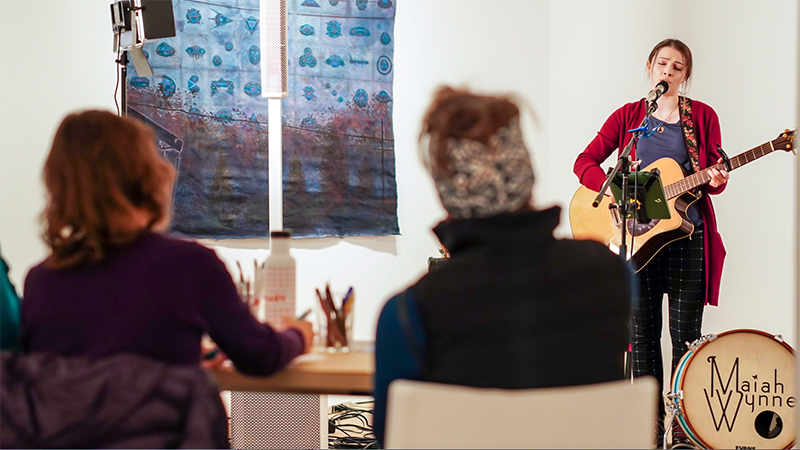Curator Courtney Gilbert sat down with longtime SVMoA supporters, former board members, and arts patrons Pete & Becky Smith to talk about their early involvement with the Museum, their love of art, and their work with organizations across the valley. As our team gears up for our annual fundraiser, the Sun Valley Museum of Art Wine Auction, now in its 43rd year, we celebrate the early days of the organization, the first wine auction, as well as how the Museum came to be at its current location at 5th and Washington with our dear supporters Pete and Becky Smith.
CG: How did you first get involved with the Sun Valley Center for the Arts (SVCA - now Sun Valley Museum of Art)?
Becky: I first connected with the Center in the summer of 1974. I took [our children] down to the Sun Valley Center for the Arts for classes in macrame and all the crafty things that were taught then—throwing pots. Very 1970s! The Center was still at its original location then, where the Community School is now.
CG: What year did you move here full-time?
Becky: My parents first brought me here in 1951 or 52. We bought a house in Sun Valley around 1986 and moved here full-time in 1987.
CG: And when were you each on the board?
Becky: We both were on the board at the same time, together. Michael Engl knew about our activities in Los Angeles. At that time, we were on the Collectors Committee at the National Gallery of Art. We were on the Director’s Roundtable at LACMA, and Rusty Powell (then Director of LACMA), when he went from LACMA to the National Gallery, he took that idea with him. The Director’s Roundtable was a group of younger collectors.
Pete: We joined the board here in 1988 or 1989, when SVCA had just moved to the Walnut Avenue Mall and had sold the original property to the Community School.
I can’t remember if Michael asked us personally, but I think he was president of the board then. He had built a large endowment for the Center, which came into play shortly after we joined the board. The gallery and the office were in the Walnut Avenue Mall. The owner of the Walnut Avenue Mall raised the rent on all the tenants. Mike Feltman, the CPA, was treasurer of the board. Joan Stewart Anawalt was on the board then, and she asked me to co-chair the board with her and divide our duties. It was a terrific partnership.
Pete: There was a high level of respect among the three of us. And at that point, Michael Feltman let me know that Bob Smith had sold Smith Optics to John Malin. John built a building for Smith in the Industrial Area, and vacated the building on 5th St. It was empty. Mike Feltman suggested we buy the old Smith building. So, he and I went and looked at it, without any architects or anything, and we thought it could be a gallery space if we removed all the cubicles, which were non-structural. I called Wes Nash—he and I had built a home and worked on some other projects. Wes came to the building and gave us an idea of what it would cost to open the center space, put in lighting, create a meeting room, build offices on the perimeter, and add a classroom with sinks. He checked the substructure. And told us that it would cost something like $40,000. Mike Feltman suggested we use some of the endowment money, so we went to Michael Engl and asked what he thought about drawing down on the endowment to buy the building, and then pay a monthly rent back into the endowment. Bob Smith agreed to let us buy it for less than he was asking. So there went the endowment put into the building. And we had no money for a remodel. But we pulled together a group of donors, mainly friends of Glenn and Bill Janss, and named the building the Janss Building. Glenn thought this was a terrific idea. Wes Nash made his donation by giving us a low price on the remodel. Jim and Jean Welsh were finishing a remodel and had a lighting expert coming. Jim asked him to help us design the lighting for the new space. He told us where to put the lighting tracks along the ceiling.
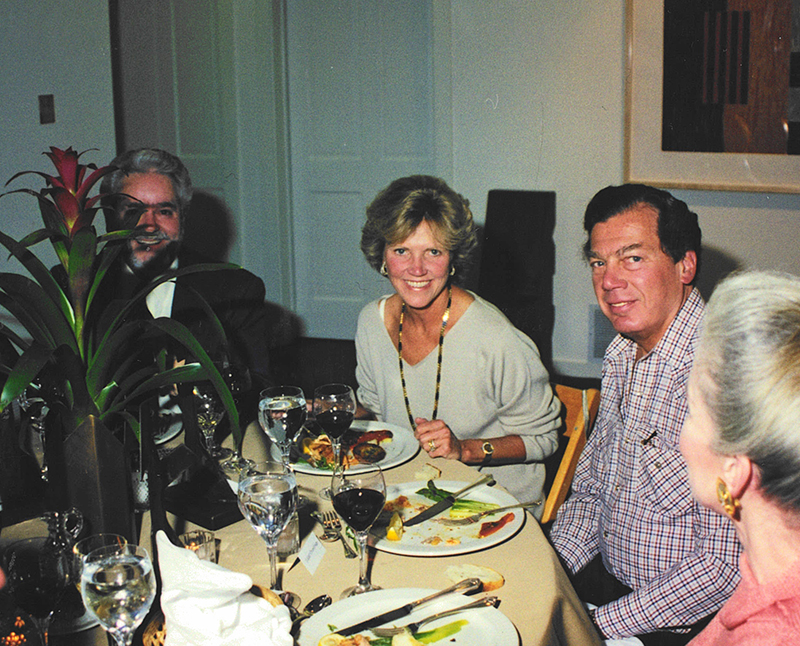
Becky Smith at a dinner celebrating the new home for the Sun Valley Center for the Arts at 191 Fifth Street, E. in 1994.
CG: And we have stuck with basically the same lighting layout even with our remodel.
Pete: Yes. And so, we went out to friends, mostly of Bill Janss, and raised close to $100,000. And we were then on a footing to continue the Sun Valley Center. And you have to give credit to Michael Engl, because he created the endowment, and we were able to use it and pay it back. Michael was instrumental in making this all happen. Staff, generally speaking at the time, wanted a larger space. But Mike Feltman, Joan and I sat down with the staff and explained that we’d start with this space and later, go grand. And here we are 30 years later! It’s served its purpose. But I can’t say we thought it would be in use 30 years later. But what you’ve just finished doing to the building with the remodel—the galleries look really great.
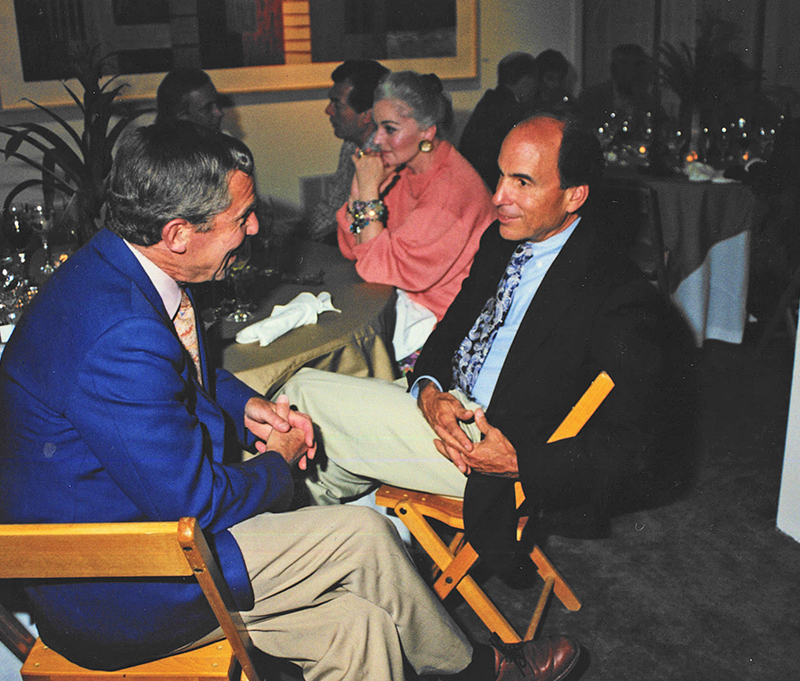
Pete Smith at a dinner celebrating the new home for the Sun Valley Center for the Arts at 191 Fifth Street, E. in 1994.
CG: Anything else you’d like to share about your time with the Center?
Becky: We got very involved with the Wine Auction. It started at Jack Thornton’s house.
Pete: And then it moved to the Gun Club.
Becky: It was a lot of fun. And when Jim Cimino first put his paddle up, that changed everything. We started having bidding wars.
CG: You two have an amazing collection of art. What are some of your favorite things you’ve collected?
Pete: We bought a lot of things from John Berggruen, who was a good friend.
Becky: Our Frank Stella Protractor piece, of course, we love.
Pete: We’ve had encounters with Frank Stella over the years.
CG: Didn’t you set up a tennis game for him here on a visit to Sun Valley once?
Becky: Oh yes. I did.
Pete: We knew Marcia Weisman, Norton Simon’s sister, who taught classes in Pasadena on collecting. She and her husband had an extraordinary collection. Her classes consisted of traveling to artist studios in Venice Beach and other places, and to galleries that represented these artists.
Becky: We took her classes. This is mid- to late 70s.
CG: Who were some of the artists you visited with?
Becky: Billy Al Bengston was our first purchase. We knew him. And we loved Kenny Price.
Pete: Dwayne Valentine. His son Nelson. Chuck Arnoldi. Ed Ruscha. Sam Francis.
Becky: A lot of the fun of collecting in those days was that you knew the artists. I was never thinking about growth in value. We never bought anything because we thought it would make money later. We bought art because we fell in love with it.
Becky: John Coplans gave classes at the Pasadena Art Museum. The exposure was great. I met Frank Stella when he was signing the Star of Persia prints. We had work by Vija Celmins and Judy Chicago.
Pete: We went to Sam Francis’s studio once and everything was on the floor. He painted on the floor. Jim Corcoran was a good friend. Sam Francis gave Jim Corcoran and us access to his studio when he wasn’t there one time. We went in with Jim and chose a painting we wanted to buy. Nick Wilder, the gallery owner, had also been in the studio and wanted the same painting before us. Sam told Nick that we wanted it, and Nick told Jim, “If it’s Becky and Pete, I want them to have the painting. But would you pick another one out for me?”
Becky: I was already collecting when I met Pete, and when he and I first started dating, he fell in love with art. And Pete’s eye was just dead on. So, we carried on together. It’s been a great adventure.
Pete: There was a time when we had Peter Alexander, Ed Ruscha, and Chuck Arnoldi up here. They wanted to go skiing, and they all thought they knew what they were doing. Jim Corcoran was involved in getting them here. So, we got their skis at the bottom and got up to the top, and Peter Alexander said, “What do I do now?” Literally! We had to ship him down somehow. He didn’t know a thing about it. He assumed if we knew how, he could do it.
CG: I know you two have done a lot of work for so many organizations in the valley. What are some other boards you’ve served on?
Becky: Both of us have been on the Community School board at different times. I was on the St. Luke’s Hospital Foundation board, and Pete is now the president. And is doing a sensational job. And he was on the SVSEF board.
Pete: I was also on the Nature Conservancy board. Glenn Janss was, too. Bill Janss helped put together the local chapter of the Nature Conservancy when he sold the Stalker Creek Ranch to them. We had our meetings in the living room of Hemingway House.
CG: I’d love to hear about your work to get public radio to the valley.
Becky: That was Ken and Judy Dayton.
Pete: Gretchen Guard was here, and her mission was to bring another radio station to the valley. We only had KECH at the time. Chuck Gates was running KECH, which was located where Vintage restaurant is now. He was the DJ. Gretchen had run into problems getting it done. Somehow Bill Janss heard, and Ken Dayton was here and was on the board of Minnesota Public Broadcasting at the time. Ken brought Bill Kling, founder and president of Minnesota Public Radio out here. Bill said we could put a 10’ diameter dish somewhere and then we can have the equipment in a closet near the dish. The Community School went along with hosting the dish. Page Jenner was involved; he was in communications and knew how to get it hooked up.
Bill Janss hosted a dinner. There were 10 couples there, including us. Ken Dayton got up and said the project would cost $20,000. He’d put in $10,000, and he told us we were all to put in $1000. Page Jenner was instrumental in getting it set up. We had limited coverage, but it was a start.
When AT&T came in and wanted to put a cell tower on Dollar Mountain, Wally Huffman knew we needed better reception. He cleared it with the Holdings and asked AT&T to provide the hookups for a stronger signal when they installed the tower. We were able to remove the dish at the Community School, and that was the first step in better reception. Subsequently, we relocated to Seattle Ridge or the top of Baldy. But it was Ken and Judy Dayton who got the project started.
Becky: And the Dayton Collection is now in an exhibition at the Walker Art Center in Minneapolis. They were wonderful people.
CG: This has been so wonderful! I wanted to talk to you about your history racing cars, too, but we’ll have to save that for another time.
Pete: That was another life!
Becky: That would be so fun. We’ll do that next time.
CG: Thank you both!
